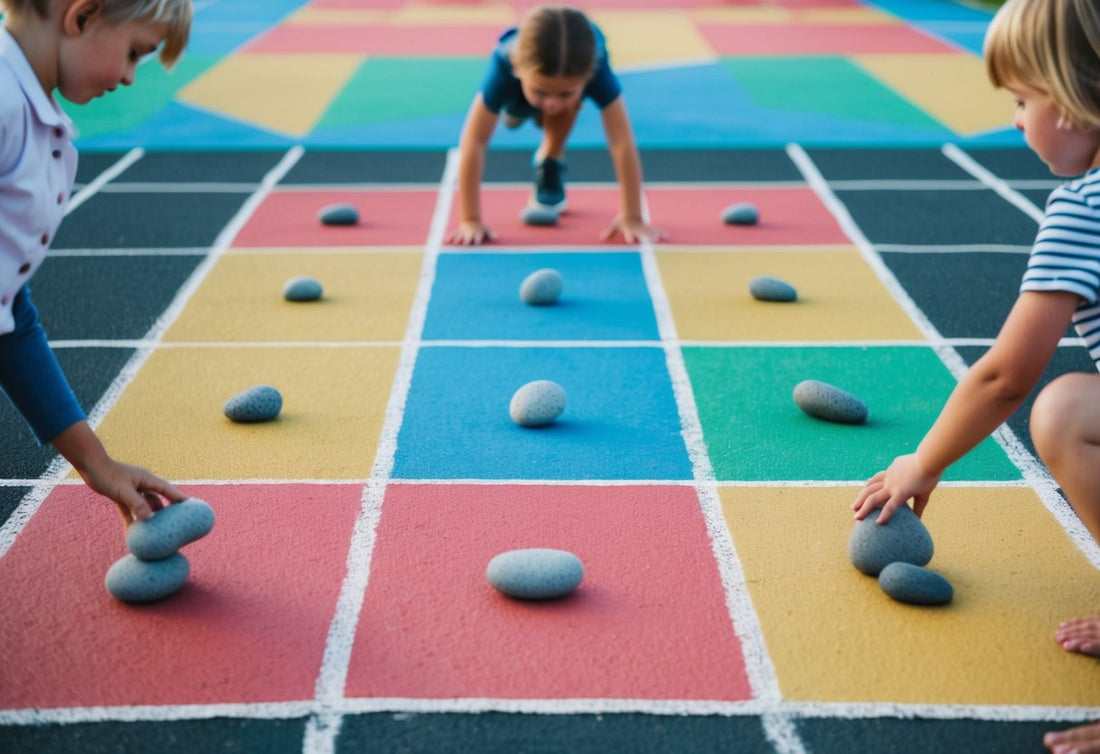
5 Simple Games That Build Motor Skills in Young Children: Fun Activities for Busy Parents
Share
Developing motor skills is a crucial part of a child's early years. As parents and caregivers, we play a vital role in fostering these abilities through fun and engaging activities. Games that enhance fine and gross motor skills not only support physical development but also contribute to cognitive growth and social interaction.
We've compiled a list of five simple games that can help build motor skills in young children. These activities are easy to set up and can be enjoyed at home or in a variety of settings. By incorporating these games into playtime, we can make learning and development an enjoyable experience for our little ones.
1) Simon Says
Simon Says is a classic game that's perfect for boosting motor skills in young children. We love how it combines listening, following instructions, and physical movement all in one fun activity.
The rules are simple. One person acts as "Simon" and gives commands to the other players. When Simon starts a command with "Simon says," everyone must follow it. If Simon doesn't use those magic words, players should stay still.
This game helps kids develop their gross motor skills as they perform actions like jumping, touching their toes, or spinning around. It also enhances fine motor control with commands like wiggling fingers or making silly faces.
We've found that Simon Says is great for improving concentration and attention span. Children must listen carefully and react quickly, which sharpens their cognitive abilities.
It's also a fantastic way to teach body awareness. As kids follow instructions to move specific body parts, they become more in tune with their physical selves.
The best part? Simon Says can be played anywhere, anytime, with no special equipment needed. It's an easy go-to game for parents looking to engage their children in active play.
2) Hopscotch

Hopscotch is a classic game that's perfect for developing motor skills in young children. We love how it combines physical activity with number recognition and balance practice.
To set up, we simply draw a hopscotch grid on the sidewalk or driveway using chalk. The grid typically has numbered squares from 1 to 10.
Children take turns tossing a small object, like a pebble, onto the grid. They then hop through the squares, skipping the one with the object. This requires careful foot placement and coordination.
As they play, kids improve their balance, spatial awareness, and leg strength. They also practice counting and number sequencing as they move through the grid.
We find that hopscotch is easily adaptable for different skill levels. Younger children can start with a smaller grid, while older ones can try more complex patterns or add additional challenges.
It's a great group activity too. Several children can play together, taking turns and cheering each other on. This social aspect adds to the fun and encourages friendly competition.
3) Stringing Beads

Stringing beads is a fantastic activity for developing fine motor skills in young children. We love how this simple game can keep little ones engaged for hours while honing their hand-eye coordination.
To get started, gather some large wooden beads and thick string or shoelaces. Make sure the beads have holes big enough for small fingers to manipulate easily. Tie a knot at one end of the string to prevent the beads from sliding off.
Encourage your child to pick up beads one at a time and thread them onto the string. This task requires concentration and precise finger movements. As they improve, introduce smaller beads or patterns to increase the challenge.
We've found that colorful beads add an extra element of fun. Children can create their own necklaces or bracelets, boosting their creativity alongside motor skills. It's also a great opportunity to practice color recognition and sorting.
For younger toddlers, try using pipe cleaners instead of string. The stiffer material is easier to manipulate, making it an excellent starting point before graduating to more flexible strings.
4) Finger Painting

Finger painting is a fantastic activity for developing fine motor skills in young children. We love how it encourages creativity while strengthening little fingers and hands.
This messy play allows kids to explore different textures and sensations. They'll learn to use their fingers and palms to create shapes, lines, and patterns on paper or other surfaces.
As children mix colors and experiment with various techniques, they're also improving hand-eye coordination. The freedom to express themselves through art boosts confidence and self-expression.
We recommend using non-toxic, washable paints designed specifically for young children. Set up a designated area with easy-to-clean surfaces to make cleanup a breeze.
Remember to supervise closely and have wipes or a sink nearby for quick hand washing. Encourage your child to describe their artwork, fostering language development alongside motor skills.
5) Building with Blocks
Building with blocks is a classic activity that never goes out of style. We love how this simple game can help children develop their motor skills in so many ways.
As kids stack and arrange blocks, they're improving their hand-eye coordination and spatial awareness. They learn to grasp, lift, and place objects with precision, enhancing their fine motor skills.
Block play also encourages problem-solving and creativity. Children experiment with balance and stability, figuring out how to create taller structures or unique designs.
We've found that wooden blocks are ideal for this activity. They're durable, easy to handle, and come in various shapes and sizes. This variety challenges children to adapt their movements and strategies.
For younger kids, we recommend starting with larger blocks. As their skills improve, they can progress to smaller pieces that require more dexterity.
Encourage your child to build different structures - towers, bridges, or houses. This keeps the game engaging and continuously challenges their motor skills.
